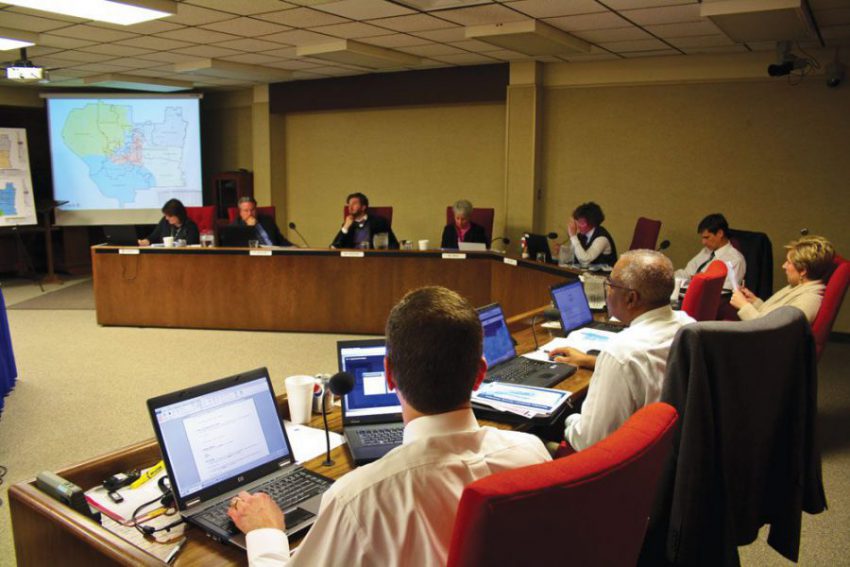
The recommendation comes as a result of Battle High School’s 2013 opening which prompted the board to redraw the existing boundary lines for a more even distribution of students. At that time Columbia’s three high schools will each change to house grades nine through 12, and the current junior high schools will accommodate grades six through eight.
The board also decided to institute a temporary transfer policy that would allow current freshmen to start in their new high school a year early instead of having to switch during their junior year. The transfer policy also stipulates sophomore and junior siblings of 2013 seniors could stay at the same high school, but siblings younger than that would have to attend their designated high school.
The Enrollment Planning Committee enlisted the services of Kansas City-based data firm RSP & Associates for statistics about each separate boundary proposal. With the information RSP provided, the committee changed a few boundary lines on “Approach B,” causing the expected RBHS enrollment to increase to 1,812 students in the fall of 2013, with Hickman High School anticipating 1,892 students and BHS 1,436 students.
“The response to the feedback at the end of November was that, on an aggregate basis, to improve the Hickman-Rock Bridge enrollment ratio,” said Don Ludwig, a secondary Enrollment Planning Committee Co-Chair. “There was a view that Hickman’s enrollment was a little too high and Rock Bridge’s a little too low. And we addressed that with the ‘Approach B.’ … we came close enough with balancing these numbers to be satisfied with these numbers.”
The proposed boundary puts most of the residents in the less developed eastern part of Columbia into the BHS district. RSP & Associates forecasts almost 48 percent of the students attending BHS at its opening to be under the district’s Free and Reduced Lunch plans compared to 24 percent at RBHS. However, Secondary Enrollment Planning Committee Co-Chair Darin Preis said the upsides to “B” made it easier to ignore such negatives.
“People were willing to overlook certain things with ‘Approach B’ that they weren’t with both A and C. When it came to “B” though, it sort of was the one that everybody kind of felt okay with. They felt like if we made a few adjustments, maybe if we look at a few specific areas, … they’d be OK,” Preis said. “They understood where we were coming from and that it was kind of the most benign of the six different scenarios that we looked at.”
The Enrollment Planning Committee held 40 community meetings and had more than 1,000 individual comments concerning each of the boundary scenarios. Around 20 parents at the Jan. 9 board meeting expressed some distaste at how many of their children would be split from friends who lived across the road. However, the board decided against bowing to one group’s desires in their Jan. 19 meeting.
“As we got into this last year, we knew, just like most public processes, that we weren’t going to please everybody and that in fact if we could minimize the anger and hatred toward us by the end of the process, we did pretty good,” Preis said at the Jan. 9 school board meeting. “And I would say we did exceptionally well because of the recommendation that we’re giving [tonight] was the one that was most favored by the majority of all the people that we talked to.”
In between the January and February meetings, members will discuss whether to adopt the recommended boundary scenario or to send the committee back to create more options. Board member Jim Whitt, who serves on the committee, said the process to decide on a boundary plan has dragged on long enough, and a decision should be made soon.
“We’ve spent about a year going through this and looking at a number of scenarios. Every time we make changes to satisfy a set of parents who had concerns, we’re going to create another set of parents,” Whitt said. “We’ve looked at this every possible way we can look at it. I think we’re about at the point where we need to make a decision.”
By Alyssa Sykuta













































































